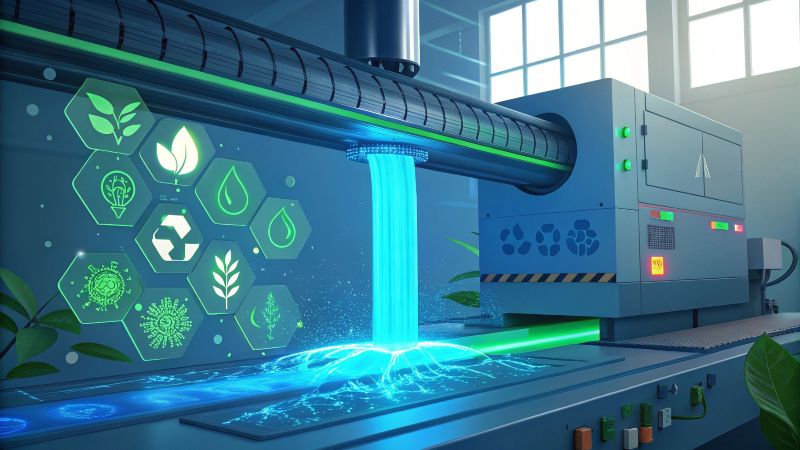
Definition of Hot Melt Adhesives
Types of Hot Melt Adhesives
Importance in Market Dynamics
Analysis Methods for Market Trends
Latest Innovations in Adhesives
Strategic Market Approaches
Future Dynamics Predictions
Frequently Asked Questions (FAQ)
Hot melt adhesives are solid bonding agents that become tacky when heated and quickly solidify upon cooling. They provide strong adhesion across multiple materials, making them essential in packaging, automotive, woodworking, and textiles. Their fast setting, solvent-free nature makes them both efficient and environmentally responsible, contributing to growing demand in various industrial sectors.
Several categories of hot melt adhesives serve distinct industrial applications:
EVA-based adhesives are cost-effective and versatile, commonly used in packaging and woodworking.
Polyolefin adhesives provide resistance to heat and moisture, ideal for automotive and electronics.
Polyurethane hot melts are known for flexibility and durability, making them suitable for textiles and footwear.
Polyamide adhesives perform well in high-temperature environments and are used in electronics and automotive systems.
These different formulations help industries meet specific technical requirements and optimize production efficiency.
Hot melt adhesives are central to understanding and responding to changing market dynamics. As global industries prioritize faster production cycles and sustainable processes, these adhesives enable high-speed, reliable bonding. They also help businesses adapt to environmental regulations, supply chain changes, and evolving consumer preferences. Staying aligned with these dynamics supports resilience and long-term competitiveness.
To navigate the market effectively, companies utilize several trend analysis methods:
Qualitative analysis uncovers consumer motivations and industry sentiments.
Quantitative analysis tracks market growth rates, sales performance, and adoption patterns.
Benchmarking assesses product capabilities and market position against competitors.
Consumer behavior studies reveal new usage trends and purchasing drivers.
By combining these methods, businesses can develop informed strategies and anticipate shifts in adhesive demand.
Innovation in hot melt adhesives is rapidly evolving, especially around sustainability and performance:
Eco-friendly formulations are reducing environmental impact while maintaining performance.
Faster curing and stronger bonding are becoming standard to support high-speed industries.
Material compatibility improvements allow for bonding to lightweight and complex surfaces.
Advanced production processes enable precise application and minimal waste.
These innovations enhance product utility and ensure alignment with future industry needs.
To remain competitive, businesses are applying strategic approaches to enter and grow within adhesive markets:
Differentiation through product performance or sustainability features
Segment-specific development for packaging, automotive, textiles, or electronics
Global partnerships with regional suppliers and logistics networks
Sustainability branding to meet growing consumer and regulatory expectations
A clear understanding of market conditions and strategic execution helps companies unlock new opportunities.
Future trends in hot melt adhesives point to expanded use and heightened expectations:
Sustainability will remain a core priority, encouraging the use of low-emission, recyclable adhesives.
Automation compatibility will grow, as production lines become increasingly AI-driven.
Global supply chain localization may shift sourcing patterns for adhesives.
Cross-industry adoption will rise, particularly in sectors seeking fast, clean bonding alternatives to mechanical fasteners.
These factors signal a dynamic and promising future for hot melt adhesive solutions worldwide.
What are hot melt adhesives?
Hot melt adhesives are thermoplastic materials that melt when heated and solidify upon cooling, forming strong bonds quickly and without solvents.
What types of hot melt adhesives are commonly used?
Key types include EVA-based, polyolefin, polyurethane, and polyamide adhesives, each designed for specific performance and industry needs.
Why are hot melt adhesives important in market dynamics?
They offer fast curing, strong bonding, and eco-friendliness, aligning with global trends in sustainability, efficiency, and innovation.
What analysis methods are used to understand adhesive market trends?
Common methods include qualitative and quantitative research, benchmarking, and consumer behavior studies to detect shifts in demand.
What are recent innovations in hot melt adhesives?
Recent developments focus on sustainable ingredients, faster setting times, improved substrate compatibility, and reduced application waste.
How can companies develop successful adhesive market strategies?
By emphasizing product differentiation, sustainability, market-specific solutions, and global reach, businesses can position themselves for growth.
What future trends will shape the adhesive industry?
Sustainable sourcing, automation readiness, and expanded industry applications are expected to drive continued global demand.
Which products dominate the current hot melt adhesive landscape?
While many unnamed solutions serve the industry, leading types include fast-setting, heat-resistant, and eco-friendly formulations tailored to high-speed production.